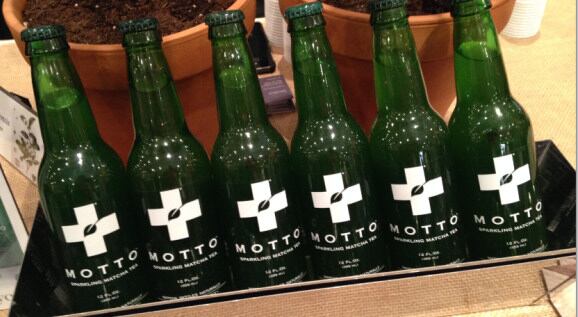As for overarching themes, says SRG, look out for “deeper explorations of global cuisines and cooking methods, especially Asian; continued efforts to reinforce community connections and adopt buying habits that promote sustainability; and new foods and flavors that meet our demands for balanced nutrition as well as adventurous… eating experiences…”
1. REGIONAL GRAINS: Expect more farmers to grow small-scale alternative grain varieties and sell them to local bakers, brewers, chefs, and consumers.
Example: Community Grains flour and pasta.
2. ADVANCED ASIAN: Look out for more complex, “spicier and funkier” and “true-to-region” Asian foods, from Northern (Issan) Thai cuisine, and Japanese okonomiyaki pancakes, to Filipino foods.
3. CANNABIS CUISINE: Cannabis will move beyond pot brownies to confections, bars, simple syrups, and bottled cold-brewed coffee.
Examples: Mirth Provisions Legal cold-brewed coffee, Craft Elixirs flavored TCH-oil-infused simple syrup.
4. CHARCOAL: With growing interest in grilled Asian foods, more chefs are turning to ancient styles of charcoal, says SRG. “Japanese charcoal, or binchotan, is kilned oak that burns at 1,652° to 2,192°F in a clean, odorless, and smokeless way that allows food to cook fast and retain natural flavors. Thai charcoal performs a similar feat. Charcoal is also coloring breads, crackers, and lemonades.”
Examples: Fine English Charcoal Squares, The Fine Cheese Company.
5. HOP-FREE BEER: “Craft brewers are taking a cue from their medieval predecessors and using herbs, spices, and other bitter plants to provide flavor balance and aroma to beer instead of hops.”
Example: New Belgium Brewing Company: Gruit—horehound, bog myrtle, yarrow, elderflowers.
6. MATCHA MADNESS: Expect more products with Japanese Matcha, powdered bright green tea that’s packed with insoluble fibers, antioxidants, and l-theanines, and starting to show up in some high-profile products from Häagen-Dazs ice cream to Jamba Juice smoothies. (Typically tea is steeped in hot water so that many of its nutrients stay in the pot/teabag; whereas Matcha is sold as a fine powder containing the entire leaf.)
Examples: Teapigs Organic Matcha; Motto Sparkling Matcha Tea; Ito En Matcha Love.
7. FARM TO TABLE KOSHER: “Seeking to eat in a more sustainable, conscious, and cultural way, Millennial Jews are starting to keep kosher, supported by a rise in small businesses offering better tasting, better sourced, and more varied kosher fare,” says SRG.
Example: Grow & Behold Kosher Pastured Meats
8. COCONUT SUGAR: While coconut sugar (from the sap in the flowers of coconut plants) has the same number of calories as regular sugar, and you’d have to eat a lot to get meaningful quantities of the minerals and other nutrients it contains, it’s gaining traction in the market as it is ‘minimally processed’, claimed to be more sustainable, and is perceived to be healthier.
This is in part because it is claimed to have a lower GI than sucrose (which is 50% glucose, 50% fructose). However, it still contains 70-80% sucrose, while claims about its low-GI credentials seem to be based on a study by the Filipino Food & Nutrition Research Institute (click HERE) featuring just 10 volunteers that compared coconut sugar with glucose (and not sucrose); so it’s worth doing some more research on this one.
Examples: Purely Elizabeth Ancient Grain Granola; Kika’s Treats Salted Caramels.
9. RESTAURANT INCUBATORS: Look out for more incubators that support aspiring chefs with kitchens, dining spaces, and marketing power.
Example: Kitchen LTO, Dallas, which features chefs chosen through social media.
10. UGLY FRUITS/VEGGIES: “In line with growing concerns over food waste, this French-born trend gives misshapen and funny-looking produce a place at the table and in recipes where looks don’t matter,” says SRG.
Maybe in future we’ll be able to go into Whole Foods and buy grains that we can mill in the store like coffee beans
In general, the trends all reflect underlying consumer motivations, from a desire for food to be more ‘authentic’, to making a connection to where food comes from, to a desire for stronger, more spicy, adventurous flavors, SRG culinary director Kara Nielsen told FoodNavigator-USA.

Meanwhile, interest in ingredients such as coconut sugar are not just about health benefits (real or imagined), but sustainability, and the desire for foods to be ‘less processed’, she said.
Indeed, many successful new products tap into multiple need states, with local or sprouted grain varieties tapping into the desire for grains that are seen to be more nourishing or digestible than ‘commodity’ grains, as well as the desire to support local agriculture, for example.
“Maybe in future we’ll go into Whole Foods and buy grains that we can mill in the store like coffee beans, or take them home and mill in our kitchens.”
In general, trends end rather than start with individual flavors or ingredients, she said. “It’s not the case that companies say Matcha green tea is hot, I’ll add it to my yogurt, it’s more that they start with a consumer demand for indulgence or whatever the need state is, and further down the line they will look at what ingredients might fit in with that need state.”
Trends are moving from niche to mainstream in record time
In general, food trends are moving much more rapidly from niche to mainstream, with many brands that started in the natural channel building a mass market presence in record time (think Health Warrior chia bars and Way Better ‘sprouted’ snacks), she said.
This change of pace is partly due to the internet, more travel, and multiculturalism, but also driven by the commercial reality that natural & organic food brands are doing better than their ‘legacy brand’ counterparts and big retailers want a slice of the action, she added.

And they are doing this in several ways: By acquiring smaller brands; allocating shelf-space to smaller brands; or incorporating trends/ingredients used by these smaller brands into their own product development plans much earlier.
Meanwhile, there are also a lot of entrepreneurs entering the market, although their profile is changing, she said.
“You’ve got the people that get started by making foods in their kitchen because their kids are celiac; and then you’ve got the former executives from larger companies that see a gap in the market, and develop a brand to fill it, in a much more calculated way, and they can grow very fast, such as Way Better Snacks (sprouted grain snacks). And I think you’ll see more of the second type in the next few years.”
Colorado-based Sterling Rice Group is a branding, innovation and strategy consultancy that works with leading CPG players, chefs, restaurateurs, and food influencers to gather trend information.
For more details on each trend, click HERE to download a PDF.
